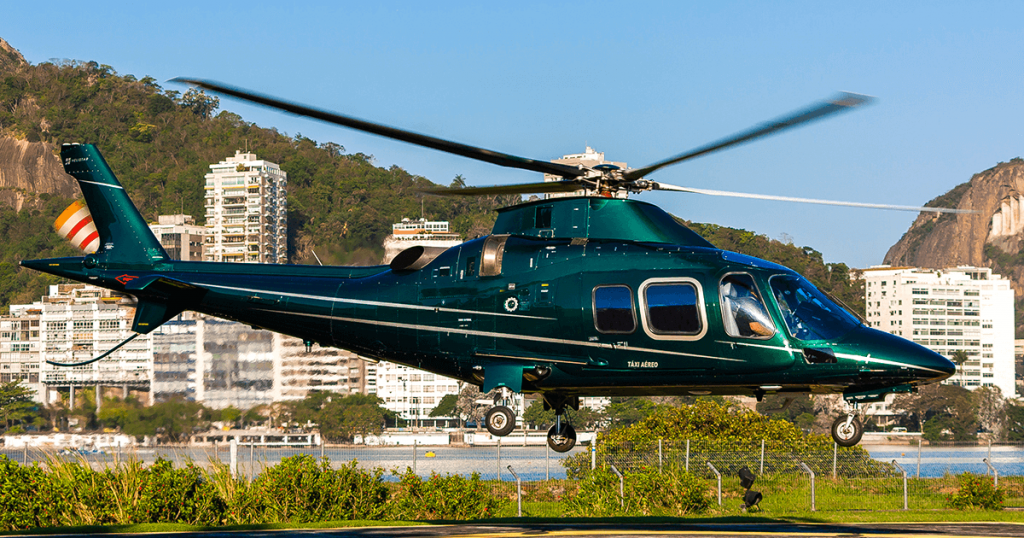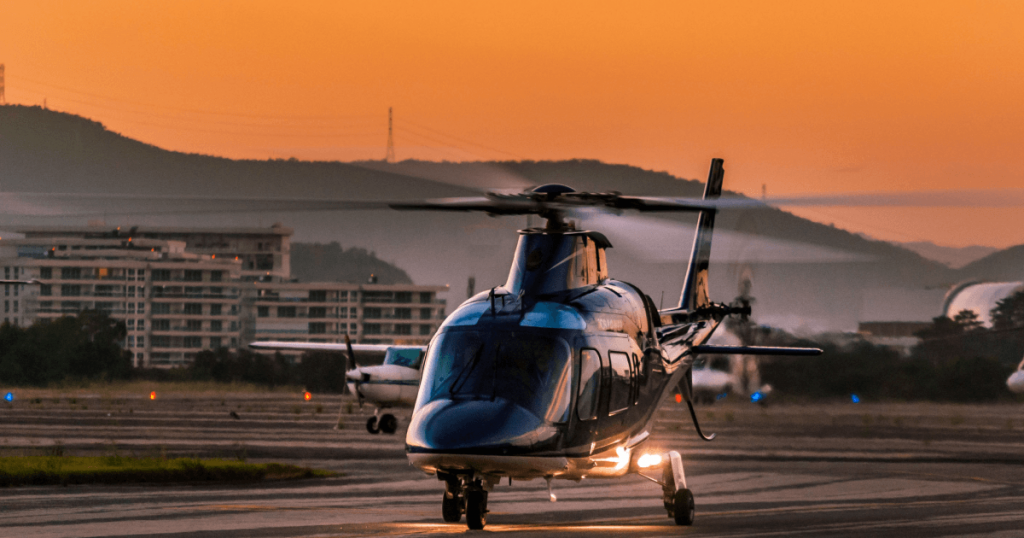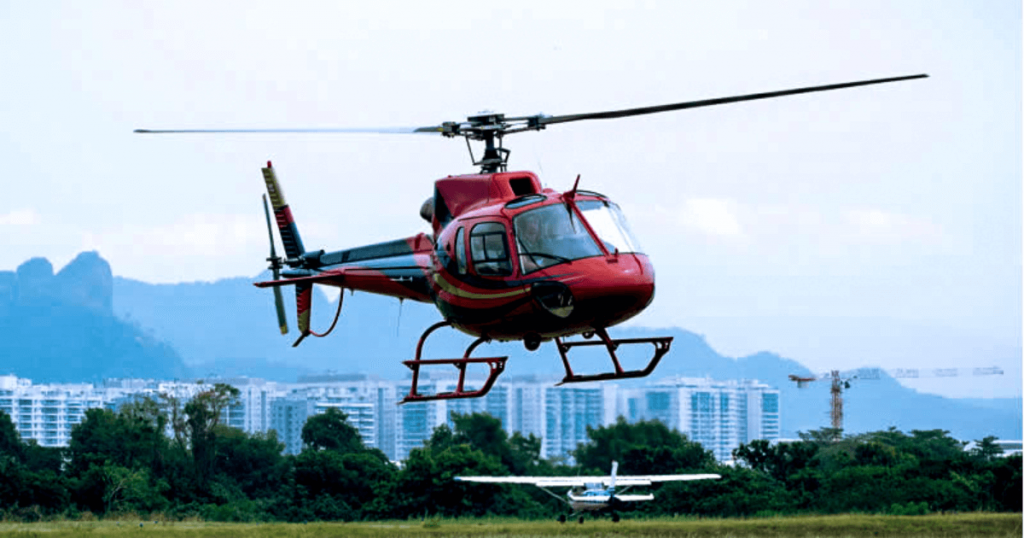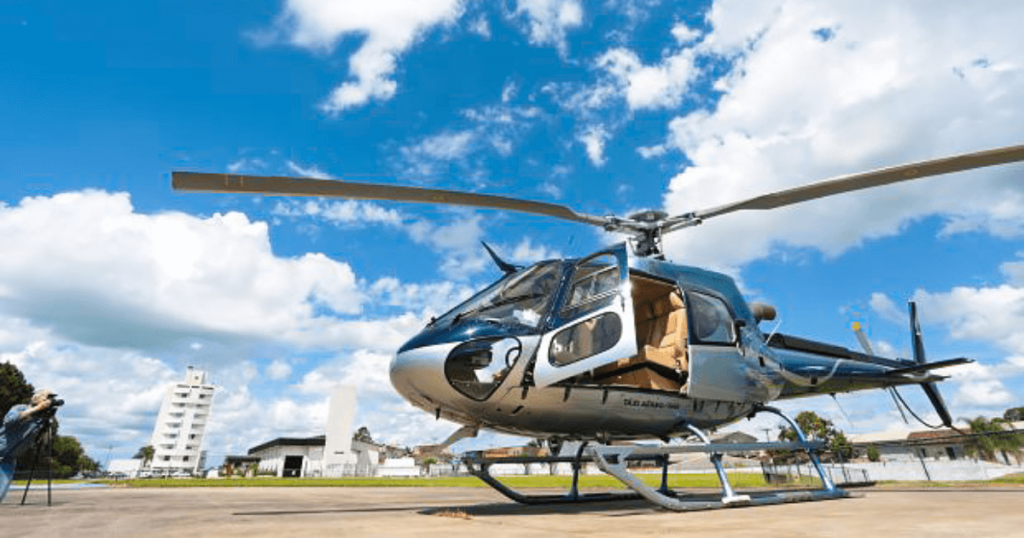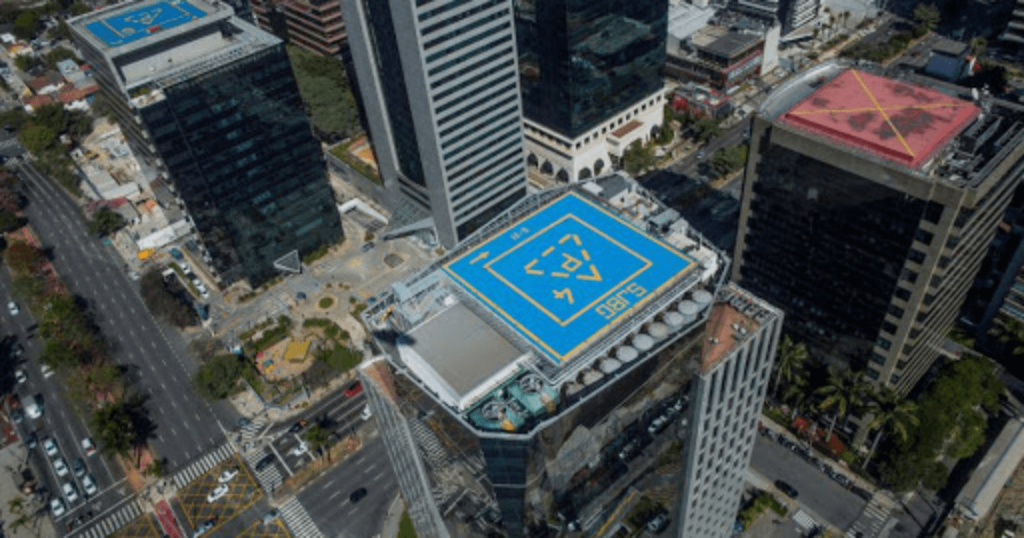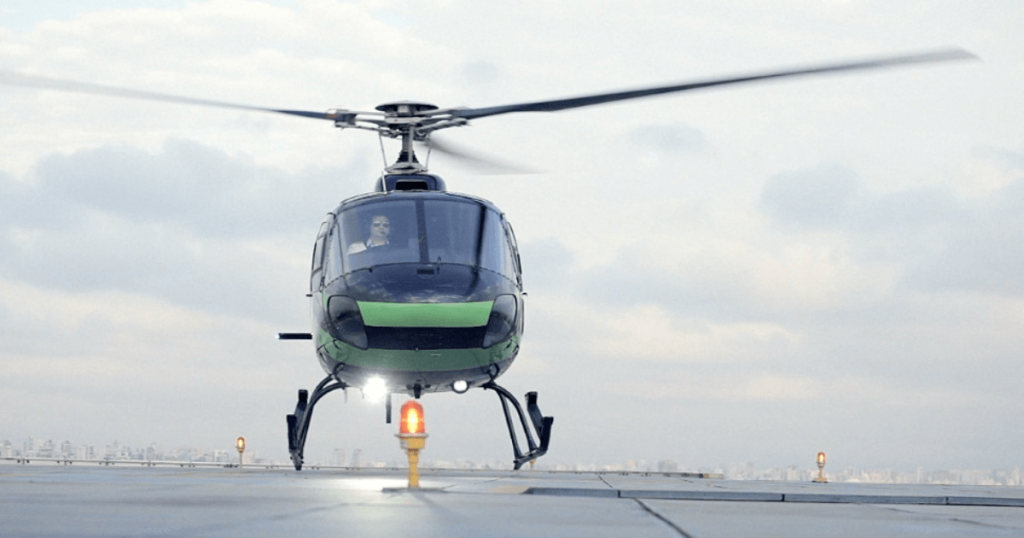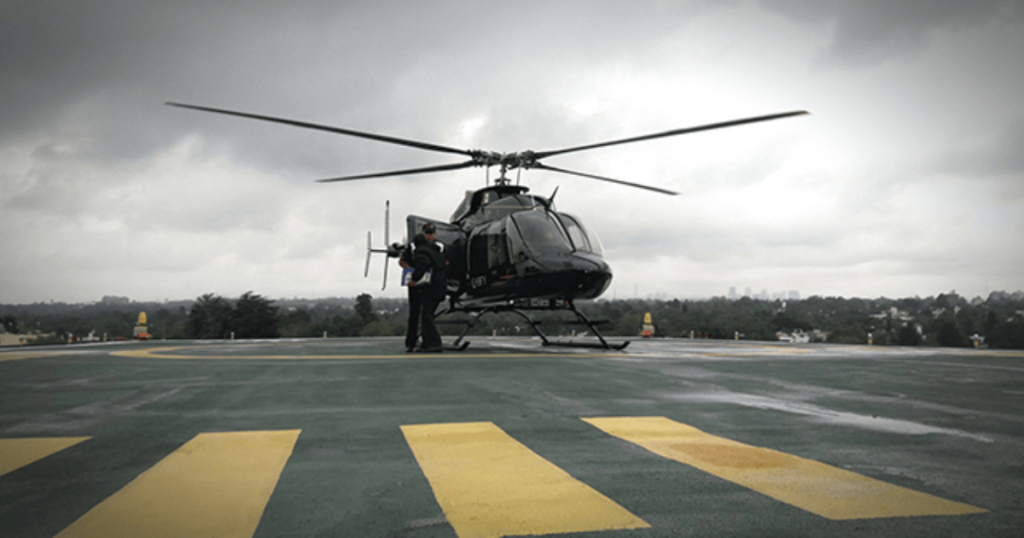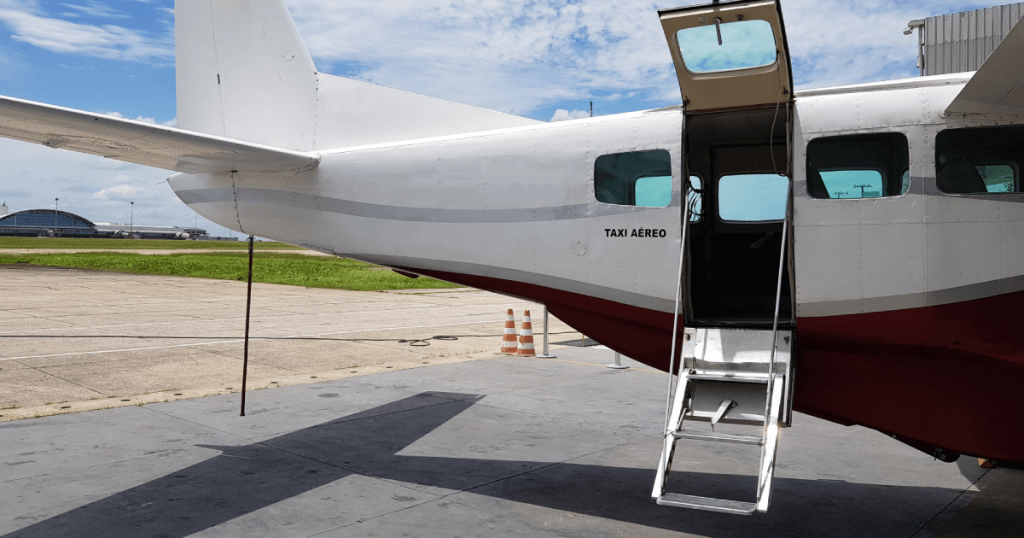Switch to:
 EN
EN  Português (PT)
Português (PT)  Español (ES)
Español (ES)
Having the second largest business aviation market in the world makes Brazil an obvious choice for those looking to experiment in this increasingly potential sector. Still little explored in a consistent way, urban helicopter transfers – also called “Uber air” – have been the target, in recent years, of analysis by companies in the urban mobility and aviation segment.
Since 2016, São Paulo has received business models that attempted to pioneer this type of aerial uber. Some were short-lived and others suffered consequences due to the global crisis caused by the covid-19 pandemic. With the closure of helicopter operations on demand in Latin America, Uber, for example, has left an immeasurable gap in the private aviation sector in major cities in the region.
Solutions like Flapper, CabiFly and Voom have since emerged as the best alternatives for booking helicopter and airplane flights. How were they created? Which one is still active? How much do your services cost? In the following article, we will analyze the current state of the private aviation sector on demand in Brazil and Latin America.
UberCopter – the Uber air
Uber’s solution for helicopter flights on demand emerged in 2016 and was first tested in the skies of Brazil. UberCopter even operated flights in one action during the Cannes Film Festival 2015, but the premiere to the general public actually took place the following year, in São Paulo.
In partnership with Airbus, this Uber air service operated at nine points in Greater São Paulo, connecting the airports of Congonhas, Guarulhos, Campo de Marte and Viracopos, in addition to offering itineraries for five heliports: Blue Tree Faria Lima, Hangar ABC, Helicentro Morumbi, Hotel Transamerica and Sheraton WTC.
However, his story was short and lasted no more than a month – from June to July 2016. Flying on the Airbus Esquilo AS350 and EC130 models, as well as the Robinson R44, the service had an analytical bias beyond the commercial one. The partnership was not just about profit – there was great interest from the French in collecting user data (such as routes and schedules, passenger profiles and their luggage) for the construction of their urban electric aircraft, the eVTOL.
In São Paulo, UberCopter was launched with promotional prices, with short routes between helipads in the amount of R $ 66 per seat. Shortly thereafter, quotations gained the increase in landing fees and UberCopter trips rose by up to 150% compared to that initially practiced.
Uber also made attempts to implement the service of urban helicopter transfers in other countries in Latin America, but, without the approval of government agencies, the company was unable to get the project in Chile, Colombia and Mexico off the ground.
Studies and tests on the feasibility of the uber air service continue. Currently restricted to a single route between JFK International Airport and lower Manhattan, New York’s UberCopter was officially launched in July 2019. Trips vary between $ 200 and $ 225 per seat and can only be requested by Platinum and Diamond users of the Uber program.
Voom
Voom emerged in 2017, in the innovation division of Airbus, Acubed (A³). The first base of its service was São Paulo, taking advantage of the city’s fleet and infrastructure and making use of the knowledge acquired months ago through a partnership with Uber itself.
In the beginning, there were five landing / takeoff points in São Paulo (Cumbica, Congonhas, Campo de Marte, Helicidade and Blue Tree Faria Lima), open from Monday to Friday. In this new attempt, the company readjusted the values practiced by UberCopter, but still managed to offer lower prices than conventional uber air operators. The stretch between Congonhas and Guarulhos airports, for example, was one of the most expensive at the launch and cost R $ 550 per seat – on a flight that could be shared with another 3 to 4 passengers. Later, the platform would make new adjustments and work with values between R $ 550 and R $ 625 per seat.
With schedule restrictions and distant from the pre-established average daily flights, Voom was unable to be sustainable in the Brazilian market. In addition to the high operating costs, which reach R $ 4.5 thousand per hour of flight in the Esquilo models, and a demand unable to close the accounts, with many helicopters returning empty of their operations, the solution was to reduce the offer. At the end of 2019, the service operated only routes between Guarulhos, Faria Lima and Alphaville.
The Airbus platform was not restricted to São Paulo, however. In 2018, it arrived in Mexico City and, the following year, expanded to San Francisco. At the beginning of 2020, A³ announced the suspension of its uber air operations due to the pandemic and, shortly afterwards, made the final closure of the project official.
Cabifly
Faced with Uber’s experiments, the Madrid-based company decided to venture into the segment. The trajectory of their service followed the molds of the North American company, with restricted routes, affordable prices and having a partner with more know-how than themselves.
His debut took place in 2016 in Mexico City. Initially dubbed the Cabifly Shuttle, the service would use helicopters from a local operator, connecting the International Airport (CDMX) to a helipad in the Polanco region. Departures took place every 30 minutes and the trip cost US $ 95 per seat.
To enter the Latin American market, Cabify followed the path previously followed by the uber air service. The Spaniards’ eyes turned to Voom, which at that time had just completed 100 days of operations in São Paulo. In August 2017, the launch of Cabifly was announced to the public.
In Cabify’s regular land transport app, the Cabifly option was added, which automatically quotes helicopter trips for a searched itinerary. Once the Cabifly function was selected, the user was directed to the Voom WebApp to proceed with the request – this being a platform integration.
The service used seven helipads in the metropolitan region of São Paulo, in addition to the airports of Congonhas, Cumbica, Viracopos and Campo de Marte and the helipads of the Maksoud Plaza Hotel, WTC São Paulo, Blue Tree Faria Lima, Alphaville Helicenter and Helicidade. At Cabifly, the shortest routes started at R $ 200, reaching R $ 440 on the Avenida Paulista – Guarulhos stretch, reflecting, in other words, the price level practiced by Voom.
With the recent announcement of the end of the project created by Airbus and its innovation incubator, the option of urban helicopter transfers on the Spanish platform has ceased to exist.
Flapper
From the idle potential of business aviation and the need to connect people to isolated regions of the Brazilian commercial airline network, Flapper emerged in mid-2016. The path to consolidate in the business aviation market would have to pass through the major centers of the country, so the initial tests carried out after the Rio 2016 Olympic Games were essential for the growth of the platform – at that time, the service was limited to the São Paulo route – Rio de Janeiro with charter of turboprop aircraft on demand and first shared flights.
In 2017, the platform already offered occasional flights between São Paulo and Rio de Janeiro and soon started offering routes to cities on the coast of Rio de Janeiro, such as Angra dos Reis and Búzios.
Soon called “the uber of the air”, Flapper implemented an urban transfer function in its mobile application. Flapper’s business model only provides for the charter of helicopters, without the option of sharing flights, due to the high degree of complexity of the operation and the lack of profitability of similar services.
Currently, in the tool it is possible to hire helicopter flights throughout the national territory, in addition to countries in Latin America, such as Argentina, Bolivia, Chile, Colombia, Costa Rica, Ecuador, Mexico, Panama, Paraguay, Peru and Uruguay.
Established in the Brazilian market, Flapper is today the solution most similar to the already interrupted UberCopter and Voom. The expectation of launch and approval of eVTOL, urban electric aircraft under development by major manufacturers in the aviation industry, position Flapper as a potential top of mind platform for shared flights.
Check out examples of popular routes below:

